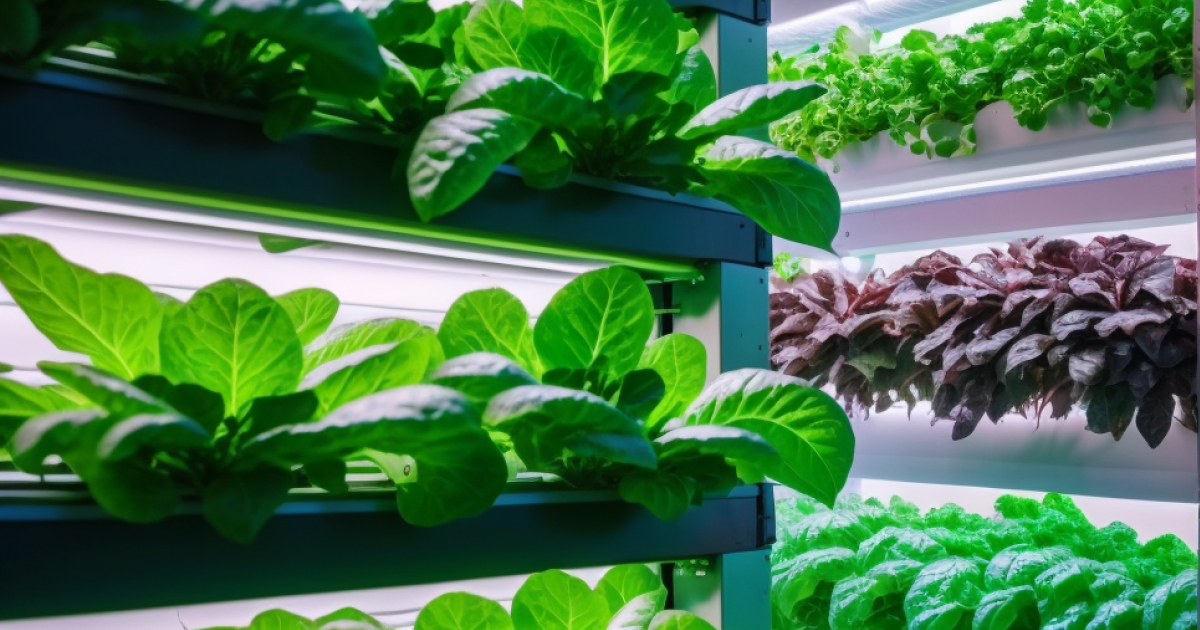
Vertical Farming: How To Grow Perfect Food 365 Days A Year
Vertical Farming: The Future of Agriculture?
This is a method of growing crops in vertically stacked layers, indoors. It is a relatively new technology, but it has the potential to revolutionize the way we produce food.
Where is This Agriculture Used?
Modern farming is currently being used in a variety of places around the world, including:
- Cities. Farms are being built in cities to help meet the growing demand for fresh produce. They can be located on rooftops, in warehouses, or even in shipping containers.
- Remote areas. They can be used in remote areas where traditional farming is not possible. They can provide fresh produce to communities that would otherwise have to rely on imported food.
- Spaceships. NASA is researching vertical farms as a way to grow food for astronauts on long-duration space missions.
Where Did Vertical Agriculture Start?
- Smart agriculture has been around for centuries, with the Hanging Gardens of Babylon being one of the earliest examples.
- In the early 20th century, a French architect designed a urban farm that was never built.
- In the 1970s, an American botanist developed a method of growing plants in aeroponics, which helped to pave the way for modern soilless farms.
- In the 1990s, Dickson Despommier published a book that popularized the concept of urban farming. He is a professor of public health at Columbia University and the author of the book The Vertical Farm: Feeding the World in the 21st Century.
- Since the 1990s, there has been a growing interest in farming due to the increasing demand for food, the growing scarcity of land, and the need for more sustainable food production methods.
Vertical farming technologies has the potential to address all of these challenges by producing more food in less space and in a more sustainable way. As a result, urban farming is becoming increasingly popular around the world.

Will Vertical Farming Replace Traditional Farming?
It is unlikely that indoor farming will completely replace traditional farming. However, it is possible that urban farming could become a major part of the food production system in the future. Urban cultivation has a number of advantages over traditional farming, including:
- It can be done in urban areas, where land is scarce.
- It can be used to grow crops year-round, regardless of the weather.
- It can be more efficient in terms of water and energy use.
- It can reduce the risk of pests and diseases.
How Vertical Farms Works
Vertical agriculture use a variety of technologies to grow crops indoors. These technologies include:
- Hydroponics is a method of growing plants without soil. Plants are grown in a nutrient-rich solution.
- Aeroponics is a method of growing plants in a mist of nutrient-rich water.
- LED grow lights are used to provide plants with the light they need to grow. LED grow lights are more efficient than traditional grow lights and can produce the full spectrum of light that plants need.
Vertical Farming vs Traditional Farming
There are two very different methods of growing crops. Traditional farming involves growing crops outdoors in soil. Vertical farms involves growing crops indoors without soil.
Here is a table that summarizes the key differences between indoor farming and traditional farming:
| Feature | Vertical Farming | Traditional Farming |
|---|---|---|
| Location | Indoors | Outdoors |
| Soil | No soil required | Soil required |
| Light | Artificial light | Natural light |
| Water use | More efficient | Less efficient |
| Energy use | More efficient | Less efficient |
| Pests and diseases | Less susceptible | More susceptible |
| Cost | More expensive | Less expensive |
Benefits
Discover several benefits, especially in areas where land for traditional agriculture is limited. Here are some key benefits:
- Space Efficiency: It allows for crops to be grown in stacks, maximizing the productivity per square foot. It’s especially suitable for urban settings, rooftops, and areas with limited arable land.
- Controlled Environment: In this type of farms, conditions such as light, temperature, and humidity can be precisely controlled, allowing for year-round production regardless of external weather conditions.
- Water Conservation: This systems often use hydroponics, aeroponics, or aquaponics, all of which use significantly less water compared to traditional farming methods.
- Reduced Use of Pesticides: Since farming is done in a controlled indoor environment, it greatly reduces the need for pesticides, herbicides, and fungicides.
- Local Production: Food can be produced closer to where it’s consumed, reducing the need for long-distance transportation and the associated carbon emissions.
- Increased Crop Variety: It isn’t limited by seasonal changes, allowing a greater diversity of crops to be grown throughout the year.
Challenges
Vertical agriculture is still a relatively new technology, and there are a number of challenges that need to be addressed before it can become a mainstream method of food production. These challenges include:
- The high cost of setting up and running a farm.
- The lack of government support for vertical farming.
- The public’s perception of indoor farming as being unnatural.
Conclusion
Vertical farming has the potential to revolutionize the way we produce food. However, there are a number of challenges that need to be addressed before it can become a mainstream method of food production. With continued research and development, farming could become a major part of the food production system in the future.